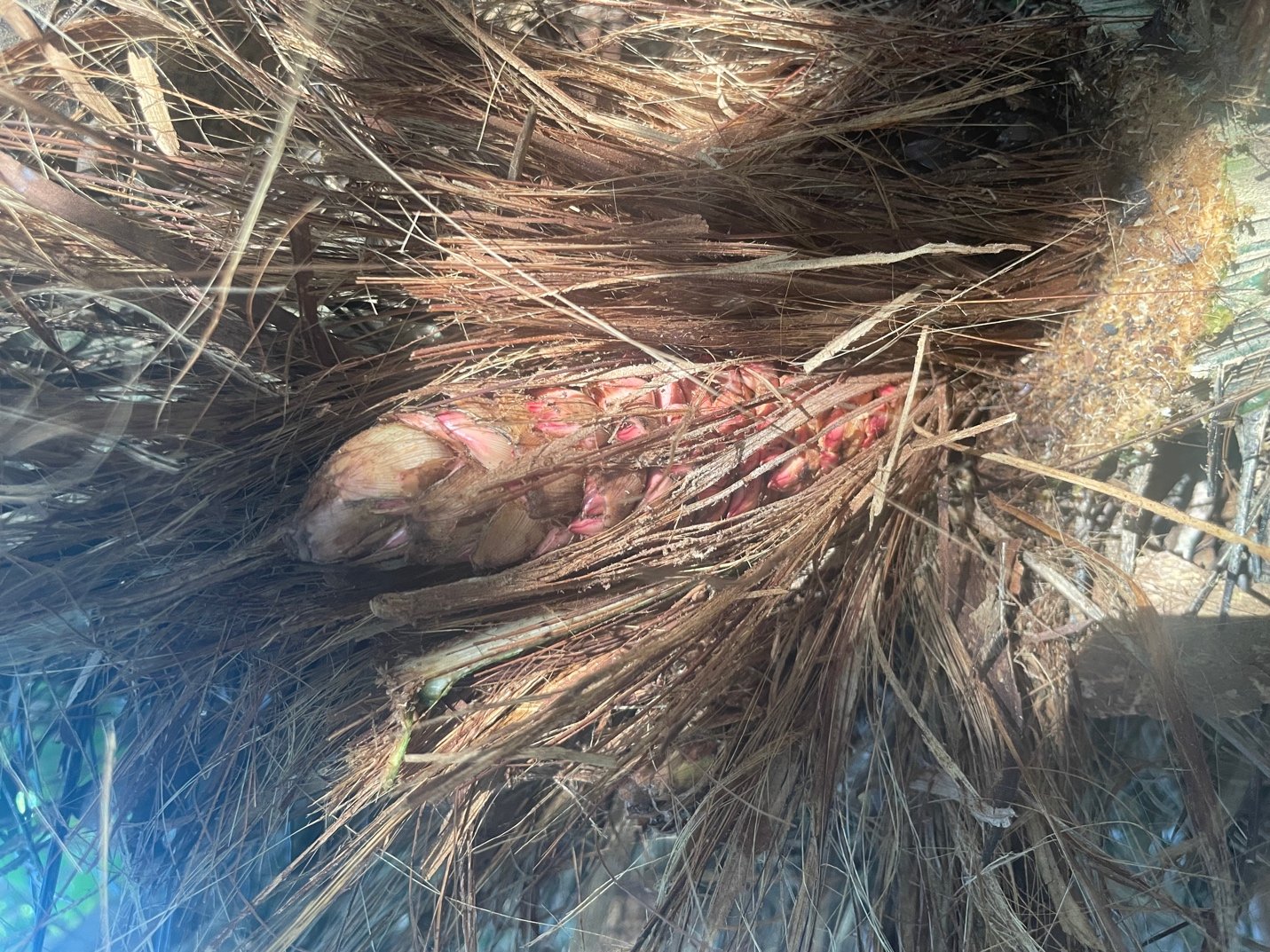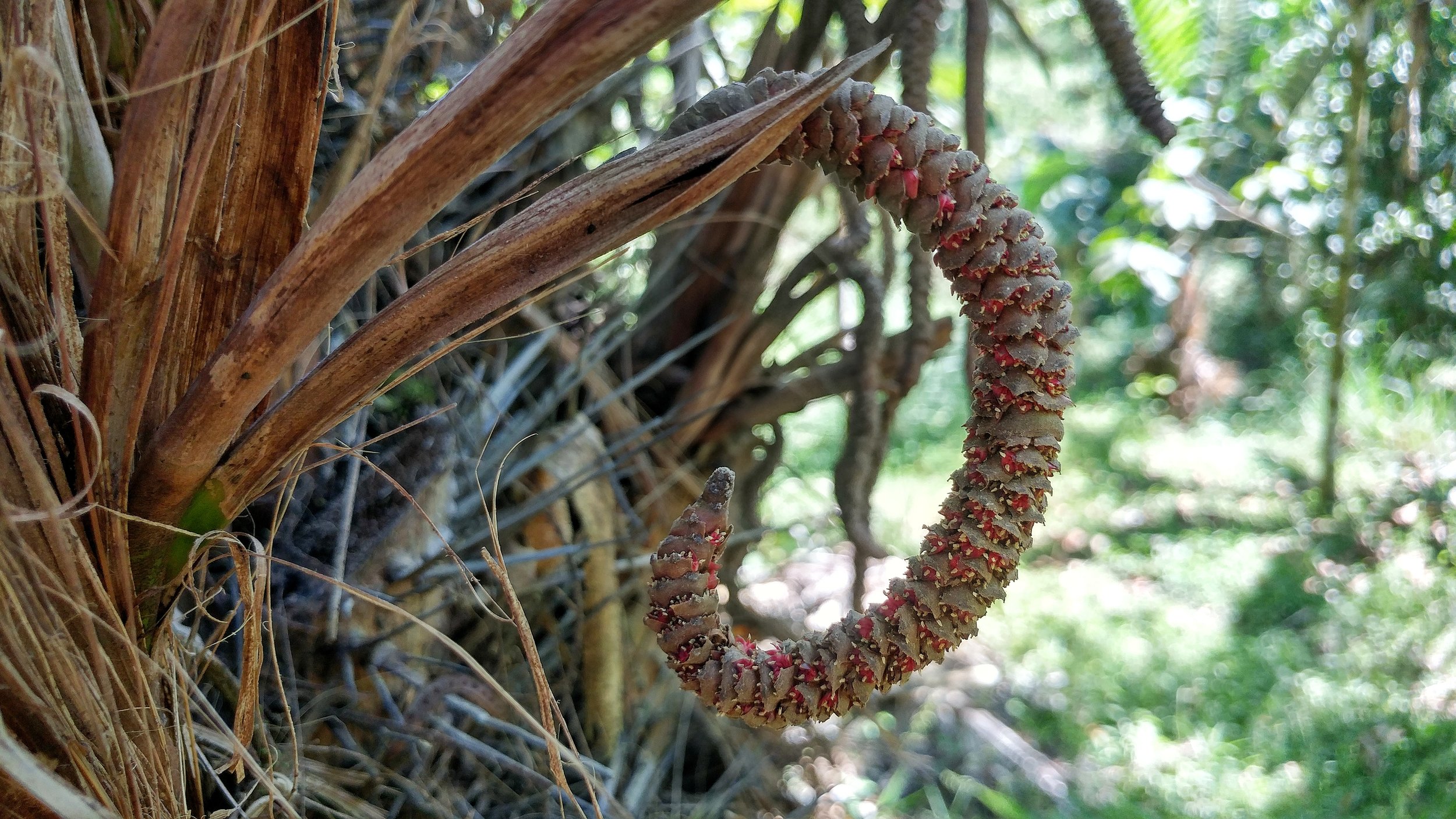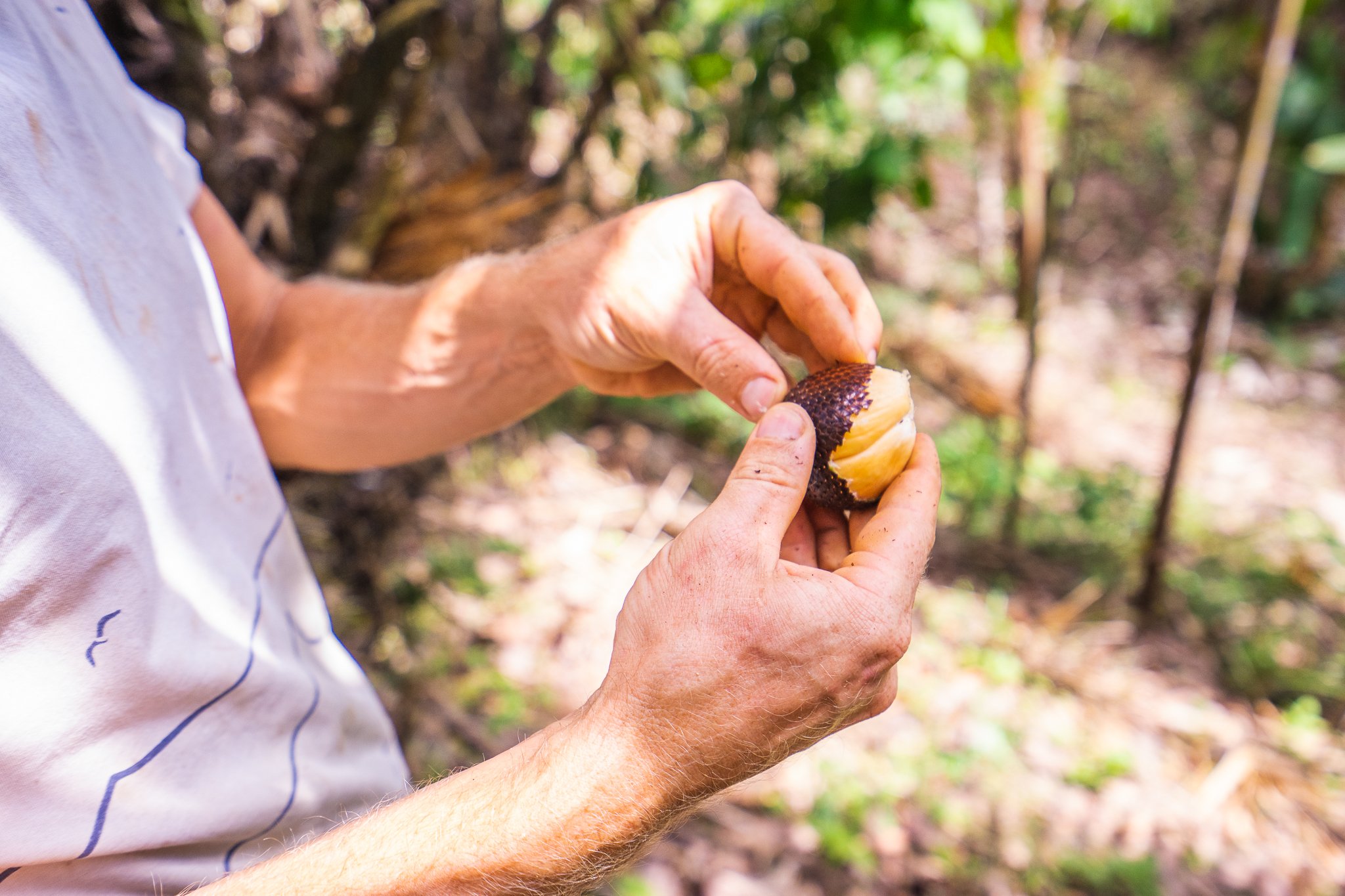Salak: A Productive Understory Crop
By 2022 apprentice AJ Nolan
Salak palm is a great option for an understory species for a permaculture tropical agroforestry system. The risks of cultivating this species are beautifully contrasted by the enjoyment and health benefits of the fruit it produces. You truly get what you pay for. The fruit can be eaten right off the palm and makes for a great snack after working in the orchards.
Salak palm is native to Indonesia and is often cultivated in analogous climates. Here at the Ranch, we have around 40 palms both male and female.
A bowl of freshly picked salak
How to Start Growing Salak
Propagation
In order to establish salak in your agroforestry spaces you’ll need to start with propagation. Salak can be started from seed and should be placed sideways and half buried in a well-drained potting mix.
Both males and females are needed for successful fruit production. There is no way to determine the gender of the palm until 3 years after planting, when they begin to flower. Having 3 female plants for every male plant has proved to be optimal for our orchard space of roughly 4000m2. Once the plants reach maturity and begin to flower you can then identify any excess males you may have. Replace them as needed to reach your ideal ratio (3 female : 1 male)
Planting
The best time to plant is at the start of the rainy season.
The soil around the palm should be heavily top-dressed with compost.
Each plant should be planted 2-3 meters apart and are best planted in the same area for safety reasons and pollination needs (more on pollination below).
Keeping in mind the spiked nature of salak, it is good practice to avoid planting where any fruit or nuts may fall from overstory species. The palm is best planted under a low-maintenance canopy of fruit and nut trees. The individuals that have done the best in our orchard spaces have been ones that receive about 50% shade.
Maintenance
Using the macana to help remove dead material
Maintenance of the salak palm is where your patience and physical fitness will be put to the test.
Once the plant reaches maturity, it is time to start pruning. Remove any dead material and any leaves that are blocking easy access and visibility to the flowers. It is recommended to remove any hijos that are growing on the mother plant. Hijos are competing with the mother plant for sunlight and nutrients so it is best to use them as mulch seeing as they inhibit fruit production. The mother plant can be identified by following the roots. The roots lead into the mother plant which is curved and looked to be in an upward dog position. Any other segment not attached to the roots, but are instead attached to the mother plant are known as hijos.
After pruning, we make donuts around the palm, using mulch from around the orchard space. Read this blog “5 Grow-Your-Own Mulch Plants for the Tropics”. We have moved away from using the salak prunings to mulch the trees with, as it makes for further maintenance and pollinating challenging. We pile the cuttings and let them decompose in a pile or burn them and add to the trees.
Helpful pruning tools
When it comes to pruning, always have both of your hands occupied so you don’t accidentally reach out and grab the spiky palm. For optimum pruning our tools are: a macana, machete, garrabato, loppers, and a pruning saw with a long blade or handle. Using a macana and a pruning saw is an effective way to pry the hijos off of the mother plant. This takes practice and it is best to have at least two people to pry the hijos away. Then, using a garrabato to move the fronds around, I use my machete to move the cuttings to the pile.
Unlike most tree species, salak’s growth pattern is not one of vertical extension. As salak continues to grow, it will shuffle along the ground (much like a snake) and will begin to hover, the roots acting as it’s foundation on the forest floor.
Pollinate
In addition to the efforts of pruning, you should also pollinate the female flowers with the male flower. The native pollinator can only be found in Indonesia so whilst native pollinators will give very low levels of production, if high yields are desired it is necessary to hand-pollinate (learn more about pollination here).
Female flower
Male flower
Salak flowers all year round, so we have found it very useful to mark the females with red flags for easier management. This is because you only need to check to see if the female plants have any receptive flowers and then go and find a male flower if needed. The female flowers are cone-shaped and covered with a dense outer layer. The outer layer is shed over the course of a couple of months and the pink flower is revealed. The male flowers should be removed and brought to the female plant to dust the open flower. Within a few days the flower should harden up, which indicates a successful pollination.
Harvesting
Now comes the best part....harvesting! To determine if the fruit is ripe, take one off towards the base of the clump of fruits, after eating the flesh, see if the seed inside has changed from white to a brown color. If the seed is brownish and the taste is sweet and satisfying, you’ll know the time is right! If the seed is light brown or white and the fruit is astringent then you will know to leave the clump of fruits on the palm to mature further. Harvest when you can to avoid competition from pests but don’t be too indulgent because the fruit does not ripen off of the plant. After repeated successful harvests you will begin to be able to identify when the clumps are ready for harvest without needing to taste one first.
The different colors of the seeds to determine ripeness
Overview
Salak is a valuable companion in your agroforestry spaces, able to be planted underneath mature fruit trees. Like anything worth doing it involves work and dedication, but the rewards are well worth the effort and the work will not be in vain. The fruit is delicious and nutritious and maintenance is a great way to truly earn the fruits of your labor.
References :
El Arbol “Al servicio de Agricultor” Vol 2. Guia de Especies
Check Out These Other Blogs About Salak & Permaculture
Salak Palm: A Guide for Tropical Permaculture
Ameding Calium-Deficient Soils - A Tropical Permaculturists Approach
LEARN MORE
Join us for one of our educational workshops about permaculture design, natural bulding, fermentation, and more. Check out our yearly workshops here.









